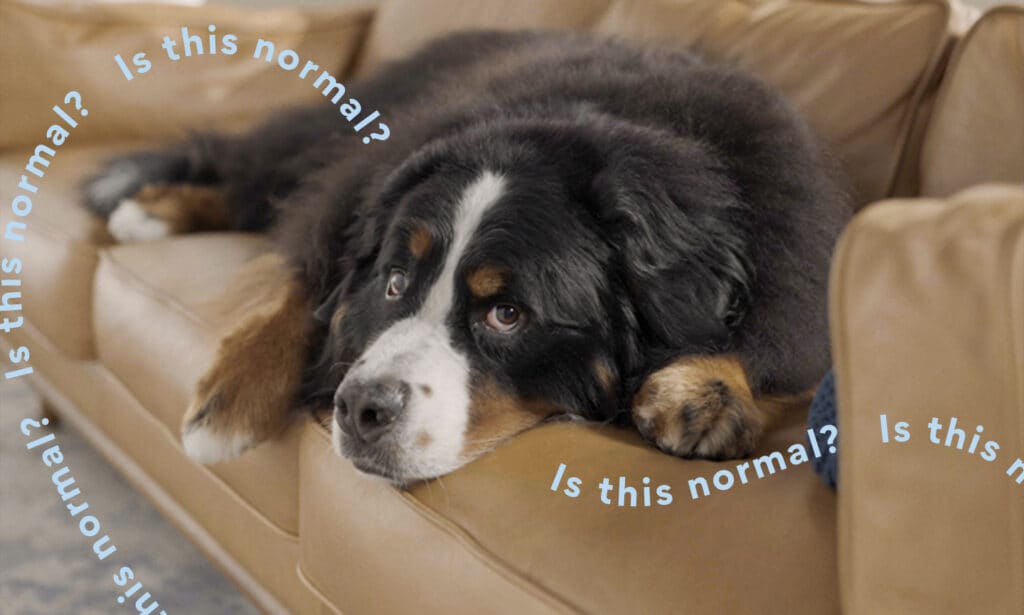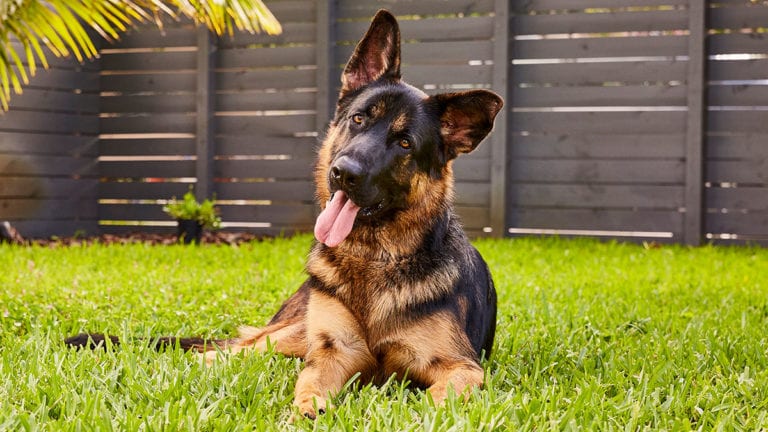Q:Sometimes my dog will make a sound that’s pretty similar to a human’s sigh, but I can’t figure out why he’s doing this. Why do dogs sigh? Is this normal?
A: You hit the nail on the head—dogs, indeed, sigh, just like people do. It is normal, but the reasons why dogs sigh may differ from why humans do it.
What Is Sighing in Dogs?
Sighing is a natural body function common to humans and other animal, says Dr. Jerry Klein, DVM, the chief veterinary officer at the American Kennel Club (AKC). “[It’s] where the normal quiet respiratory rate is interrupted involuntarily by a louder and longer inhale followed by an appropriate exhale,” he explains.
In humans, sighing typically occurs as part of an emotional response, to emotions like anxiety, arousal or pain, or simply to help regulate the respiratory system when the body needs it. “Occasionally, some air sacs can collapse, and sighing can help reset them,” Dr. Klein says.
He says that, when it comes to dogs, sighing is often associated with emotional responses, too.
6 Reasons Why Dogs Sigh
Dogs may sigh as a way to express themselves to their pet parents. “It can be a way of communicating to humans,” Dr. Klein says. Here are some common reasons your pooch may sigh:
Contentment
Ever hear your dog let out a big sigh as you give them a belly rub or scratch behind their ears? Yeah, that’s probably a sign of contentment.
“When sighing is due to comfort, the dog’s face will be ‘soft’,” says Dr. Klein. He adds that the dog’s ears and body may be relaxed, and their eyes will be closed or semi-closed.
Pleasure
If your furry friend lets out a sigh during playtime at the dog park, it might be because they’re feeling pleasure. Similar to contentment, if a dog sighs because they feel pleasure, their face will also appear soft, their ears and body will be relaxed and their eyes will be shut or semi-shut.
“Learn how to ‘read’ your dog by discerning a ‘soft’ face, with relaxed eyes, ears and body positioning,” advises Dr. Klein.
Relaxation
Sometimes, you might witness a dog sighing as they begin to drift off to sleep. “Personally, I’ve observed it in my dog just on the edge of sleep,” says Leigh Siegfried, founder and training director at Opportunity Barks Behavior Training in Philadelphia and Quakertown, Pennsylvania. She shares that when a dog sighs because they’re relaxed, the behavior often is accompanied with a “soft” mouth.
Boredom
Perhaps you’ve been here before—you’re sitting at your desk trying to get work done, and you hear a sigh coming from your furry friend across the room as they sit there watching you. If this sounds like you and your pup, you’re not alone. Dr. Klein says that some dogs may sigh as a sign of boredom. In this case, the dog will have alert, open eyes, and their body will be anxious or anticipatory.
Learn how to prevent dog boredom.
Disappointment
Ever notice that your dog will sigh when playtime is over? Or when a long walk comes to an end? This might mean they’re disappointed. Like boredom, Dr. Klein shares that when a dog sighs because of disappointment, their eyes will be open and alert, and they might be lying down, or sitting up and anticipatory.
To Regulate Minor Respiratory Imbalances
Dr. Klein also points out that it can be assumed that, similar to humans, sighing may occur in dogs to help regulate the respiratory system.
When Dog Sighing Could Be a Concern
Sighing isn’t normally a cause for concern, but there are other noises dogs make that sound similar to sighing—and some of those sounds could indicate an issue, such as a medical condition or a sign your dog is having trouble breathing. Those include:
Moans
“Moans are similar to sighs, but the sounds come from the vocal cords, not the audible inspiration,” says Dr. Klein. (Inspiration is another way to describe the drawing in of air into the lungs.) He says that, unlike sighs, moans may indicate pain or discomfort, such as that caused by abdominal pain, back pain or osteoarthritic pain.
“If a dog is moaning and suspected to be in discomfort or pain, one should immediately consult a veterinarian and have the dog evaluated by a veterinarian as soon as possible,” he adds.
Panting
Panting is another dog sound that could easily be confused with sighing. “Panting involves many short rapid breaths, while sighing usually involves one longer breath,” explains Dr. Klein.
Labored Breathing
“Labored breathing occurs when there is a noticeable effort by the dog to move the chest wall or when the abdomen is actively involved in the process of breathing,” shares Dr. Klein. “Unlike sighing, which is usually isolated, labored breathing is extended with every breath.”
He stresses that labored breathing is a sign to contact your vet immediately.
Yawns
“Yawns also involve taking a deep breath,” says Dr. Klein. “However, a yawn requires a wide open mouth.” This is not as concerning as the other sounds; you might see your furry friend yawn when feeling fatigued or stressed.
What Is Considered Excessive Sighing in Dogs?
Although what’s considered excessive sighing may vary from dog to dog, Dr. Klein says if you feel or observe that your dog is doing anything excessively—sighing or otherwise—you should check in with your vet to rule out any issues.
Similar to humans, your furry friend may sigh for any number of reasons, including communicating that they’re bored or content and as a way to correct minor respiratory imbalances.
Now that you’re up to speed on why dogs sigh, learn more about other common dog behaviors and what they mean.
Learn more about dog behavior:
Share:









